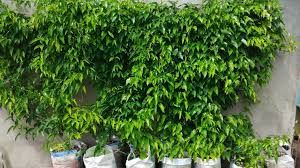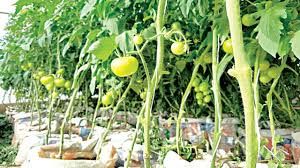🌱 How to Start Sack Bag Farming at Home (Beginner’s Guide)
Have you ever wished you could grow your own food even without land? With sack bag farming, you can! All you need is a sack, some soil, and a few seedlings — and you can harvest fresh vegetables right from your backyard, balcony, or even a corner of your compound.
This method is called Urban Sack Bag Farming. It is simple, affordable, and perfect for families, women, youths, and even schools.

🌾 What Is Sack Bag Farming?
Sack Bag Farming means planting crops in large sacks or containers filled with soil instead of planting directly on the ground. Think of it as creating a mini farm in a bag.
With one sack, you can grow up to 15 crops together — saving space, reducing cost, and making it easier to manage pests and water.
🥦 What Can You Grow in a Sack?
Here are some common crops that do very well in sack bags in Nigeria:
- Tomato 🍅
- Pepper 🌶️
- Okra 🌱
- Ugu (Fluted Pumpkin) 🍃
- Spinach (Green) 🌿
- Cucumber 🥒
- Carrot 🥕
- Lettuce 🥗
- Waterleaf 🌱
- Sweet potato 🍠
- Yam 🍠 (new and trending!)
- Beans / Cowpea
- Garden egg 🍆
👉 You can even mix crops — for example, tomato + pepper + ugu in one sack.
🛠️ How to Start (Step by Step)
- Get a sack or container
Use a rice sack, fertilizer bag, or jute bag. Make small holes around the sides for water to drain. - Prepare the soil
Mix normal soil with compost or animal manure. For better results, add ash (from maize cobs or palm kernel) or organic enhancers like Humi[K] WSP® to keep the soil fertile and moist. - Fill the sack
Pour in the soil mix until the sack is full. - Plant your crops
Plant tall crops (like maize or yam) in the center.
Plant smaller crops (like pepper, tomato, or spinach) around the sides.
Use the top layer for leafy vegetables (like lettuce or ugu). - Water regularly
Sack farms dry out faster than normal soil, so water daily (but don’t overflood). - Control pests naturally
Plant marigold, basil, or scent leaf around to chase insects and attract bees for pollination.

🌍 Why Sack Bag Farming Is Great
✅ Saves space — even works in small backyards or balconies
✅ Low cost — you can start with less than ₦1,000
✅ Healthy food — eat organic, chemical-free vegetables
✅ Family project — involve children in planting and harvesting
✅ Income — sell extra crops in your neighborhood
🎥 Join Our Free Training
Want to see sack bag farming in action?
Watch our last session replay here
Join AgroGreen’s 12 Weeks Online Training Series every Sunday 9pm.
👉 Register here
Sack bag farming is easy, practical, and powerful. You don’t need land to start farming — just a sack, soil, water, and seedlings. Begin with one sack today, and watch your home turn into a mini farm.
Your sack can feed your family — and even become a small business. 🌾
